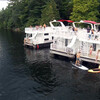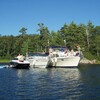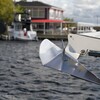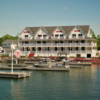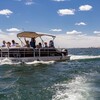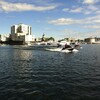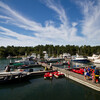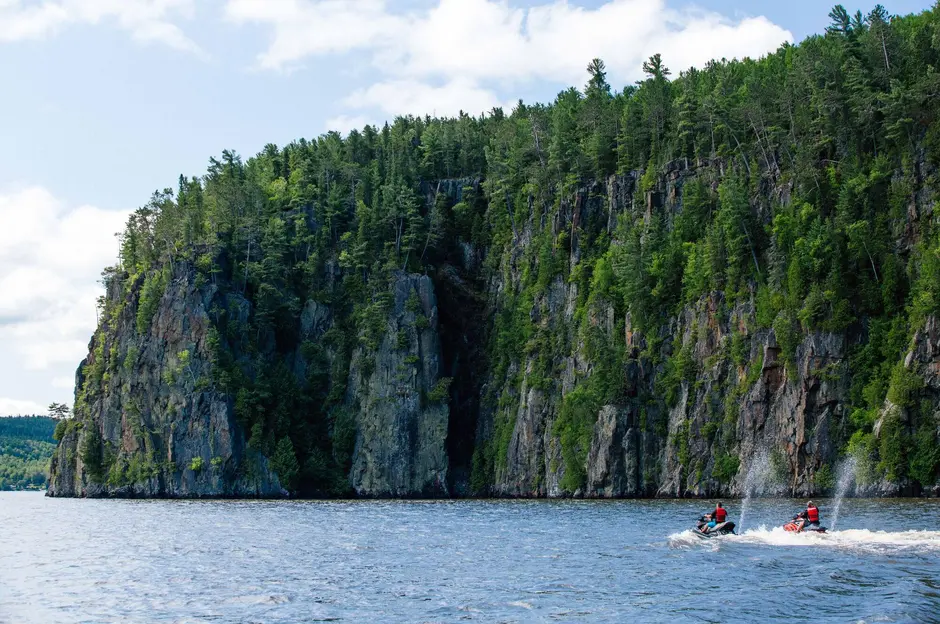
Meet the Majestic S.S. Keewatin

*Editor's note: As of 2023, the S.S. Keewatin was relocated to Kingston, Ontario, and is now permanently docked at the Marine Museum of the Great Lakes.
The S.S. Keewatin was an Edwardian passenger liner in the Canadian Pacific Railway Great Lakes Steamship fleet, transporting passengers from Port McNicoll, Ontario on Georgian Bay to Fort William & Port Arthur (now Thunder Bay) for close to 60 years. Built by Fairfield Shipbuilding and Engineering Company in Scotland as Hull No. 453, the Keewatin was launched July 6, 1907 and entered service in the following year. The liner originally worked out of Owen Sound, Ontario for five seasons. The fleet then moved to Port McNicoll Ontario in June of 1912 to join with a new Canadian Pacific rail terminal. The Keewatin also carried packaged freight goods for the railway at these ports.
The ship was built five years before RMS Titanic and in the same culture as it contains everything the Titanic did. The Quadruple expansion steam engine and the "Scotch" boilers are the same as the famous, much bigger ship. Keewatin has a Grand Staircase, Edwardian dining saloon, and hand painted Italian glass and oak trim throughout the vessel.
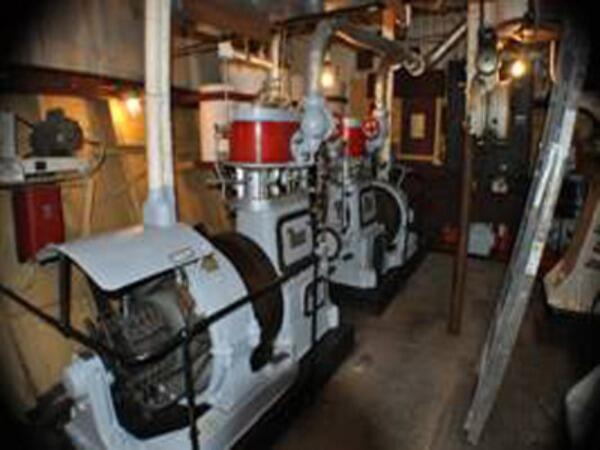
The S.S. Keewatin ran continuously for almost 60 seasons, retired in 1966. She also had a sister ship built in the same year, the S.S. Assiniboia. Both ships were the first to have radar on the great lakes. The journey was a two-and-a-half-day trip across Lake Superior and Lake Huron, with a stop in Sault Saint Marie and the reverse starting in Georgian Bay. The Keewatin, when commissioned, carried 288 passengers with a crew of 86 and was 350 feet long with a 3300 horsepower coal boiler with a top speed of 14 knots. She and sister ship, Assiniboia, joined the CP Fleet which already had three ships dating from the 1890s: the Alberta, the Athabasca and the Manitoba. These ships moved millions of pounds of grain and goods as well as hundreds of thousands of passengers.
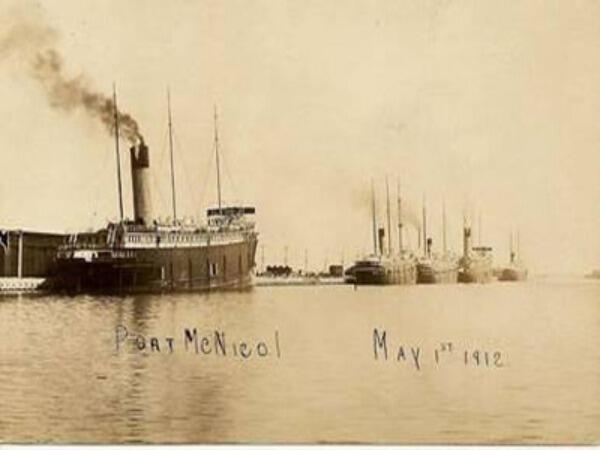
After the 1950s, trans-continental shipping was soon moving more to trains. They had better locomotives, could pull longer trains, and had more tracks around the Great Lakes through Northern Ontario. Trucks and airplanes also began to eat away at the shipping business, not only in Canada but all over the Great Lakes. The steamers that survived had to concentrate on tourism and cruise passengers. The Keewatin and her sister, Assiniboia, where the classiest of the fleet, having been built in the British Edwardian tradition of Titanic and Lusitania.
However, times continued to change. Strict regulations were imposed on the wooden cabin steamships on the Great Lakes after the 1949 S.S. Noronic fire disaster in Toronto, Canada where approximately 118-139 lost their lives. Like many passenger ships of that era on the Great Lakes, the Keewatin and sister ship Assiniboia operated under fire codes and rules imposed for wooden cabin steamships. Doomed by their wooden cabins and superstructure, these overnight cruisers lasted through the decline of the passenger trade on the lakes in the post-war years. As passengers opted for more reliable and faster modes of travel, the Keewatin and her sister ship were withdrawn from the passenger trade in 1965.
Canadian Pacific ended the service with the final journey on November 28, 1965 with the S.S. Assiniboia departing Port McNicoll. It was a death knell to the town which had been known as the Chicago of the North. The Keewatin and Assiniboia operated one more year as freighters, then were withdrawn from service. Unfortunately, the Assiniboia caught fire during renovations on the East Coast United States and sank in 1968.
And then there was one.
The Keewatin became then the last of the Great Lakes passenger liners, and for that matter, the last of the Edwardian built steamships in the world. Still in existence, it has been operated as a museum in Saugatuck/Douglas, Michigan. In 1967, the Keewatin was purchased by R J Peterson of Douglas, Michigan from the scrap dealers who were preparing to render her parts for melting and antiques. A marina owner and Great Lakes Historian, Mr. Peterson had been given a coffee table book for Christmas that pictured the liner waiting in the ice of Port McNicoll for disposal.
He borrowed the funds, bought the ship, and the S.S. KEEWATIN was towed by tug back to Lake Kalamazoo, where she resided in a wide turn in the Kalamazoo River where it empties into Lake Michigan. There she was established as a Maritime Museum and has been lovingly cared for by the Petersons for 45 years.
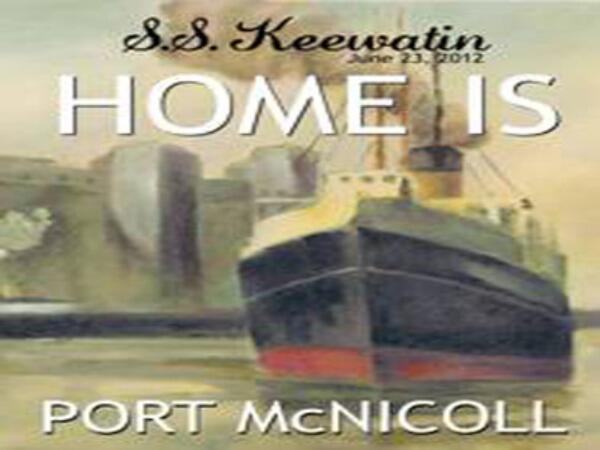
The Keewatin has begun a new chapter in her life. She was sold in September 2011 to an interest in Canada and returned, towed by tug boats to Port McNicoll, and is now in the process of becoming a Great Lakes Museum and living historic site.
The Keewatin is in incredible condition for 105 years old; however, she requires constant maintenance and upgrading to keep her alive, well and safe. She won’t open to the public until 2013, but its return is significant historically as it will be 100 years in June since she first arrived here in 1912 and 45 years in June since she went to the US in 1967. There will also be a lot of work to get her to code for Ontario so she can host tours, have people eat in her restaurants, drink in her bar and be entertained in her 300-seat theatre. She will have a world class museum on board as well as an operating wireless centre and marine radar in a special marine communications museum in the forecastle.
Captain Eric Conroy has been honorary captain of the Keewatin for 17 years and has been working with the US owner as a volunteer for 15 years. He spearheaded the return of the Keewatin to Canada, and is responsible for setting it up as a non-for-profit corporation and developing its operation. Eric worked on the ship as a 17-year-old waiter in 1963 and '64, and spent his summers from the age of eight living in the campgrounds of neighbouring Midland’s Little Lake Park. Conroy retired from business in June of last year and started this incredible project in August. He recently stated “As you can imagine, getting to do this is a dream come true. I get to finish off where I started at 17 with a project that is near to my heart.”
This will surely play a significant part in putting the small community of Port McNicoll back on the map.
The community of Port McNicoll welcomed home the majestic S.S. Keewatin on June 23, 2012!
Keewatin’s final journey has been generously made possible thanks to Skyline Investments.
Recommended Articles

6 Ways to Explore the Great Lakes by Boat or Cruise

Discover Northern Ontario's Top Boat Tours
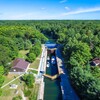
A Guide to Boating the Trent Severn Waterway in Ontario 2025

Boating Events in Ontario: A Complete Guide to Summer 2025
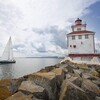
19 Charming Lighthouses to Visit in Northern Ontario
I Boated the Trent Severn Waterway and Here's What It Was Like
I Sailed the New Viking Octantis and Here's What It Was Like

Canadian Canoe Museum

14 PWC Itineraries and Tips for Riding in Ontario

A Thousand Adventures: Boating the 1000 Islands in Ontario

Road Tripping with your PWC
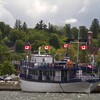
Boat Tours and Cruises in Ontario
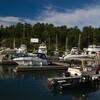
A Guide to Ontario's Marinas

5 Baller Boating Destinations in Ontario

Amazing PWC Getaway
